I haven’t really used a K-mount camera that much since my old Ricoh
KR-5 Super II that I used religiously a couple decades ago as my first
SLR camera. As a result, my exposure to Pentax gear is generally
limited to what I see at trade shows. Stepping aside . . . ain’t it a
bit ironic that Ricoh now owns Pentax when it previously used Pentax’s
K-mount to make K1000 clones like the KR-5 Super II?
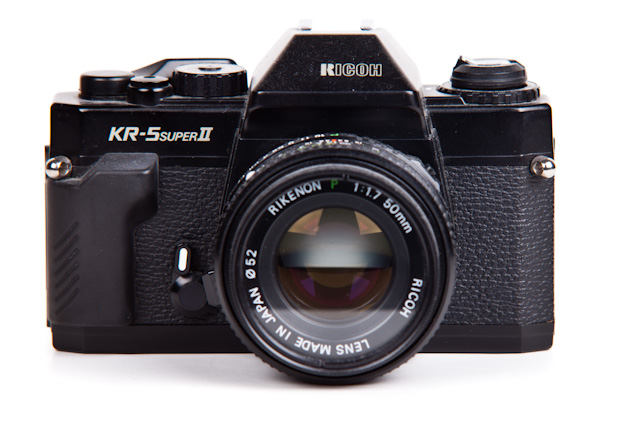
With that nostalgia out of the way, I took a closer look at the new Pentax K-5 II and K-5 IIs at the Pentax booth at PhotoPlus 2012. At first blush, I love the way the camera feels in the hand, along with a very intuitive control and menu scheme.
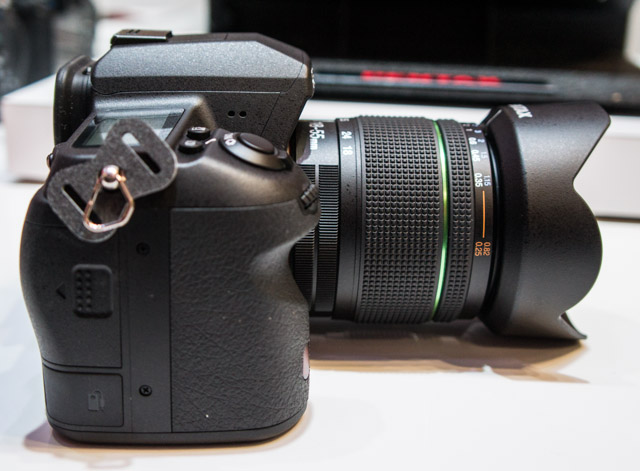
While the K-5 II is not overly large, it still felt like more of a professional tool than some similarly situated cameras from Pentax’s competitors. The rear LCD looks great and provides the relevant info without trying to get too pretty with fancy graphics.
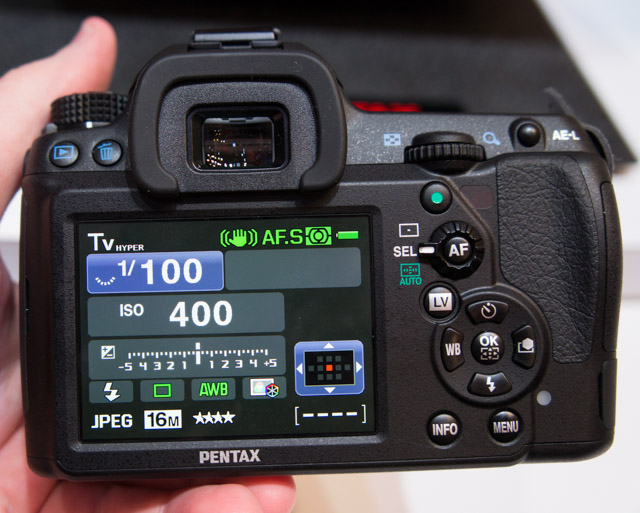
The K-5 II has a very fast AF even with the 18-55mm kit lens, which also has nice zoom and focus rings. The lens zoom and focus rings have a great grip to them with the little raise rubber bumps – and the rotation is smooth and accurate.
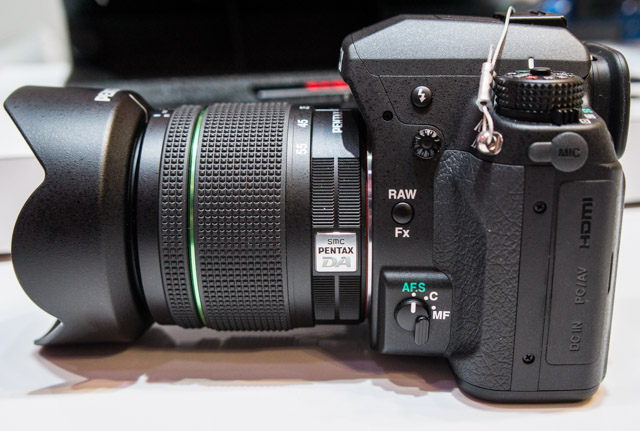
Additionally, the K-5 II controls are great for making quick adjustments to AF settings. You can choose between different points and modes quickly with a switch/button that’s accessible via the right thumb – and AF-S, AF-C and M focus modes are accessible via a manual switch on the front left of the camera.
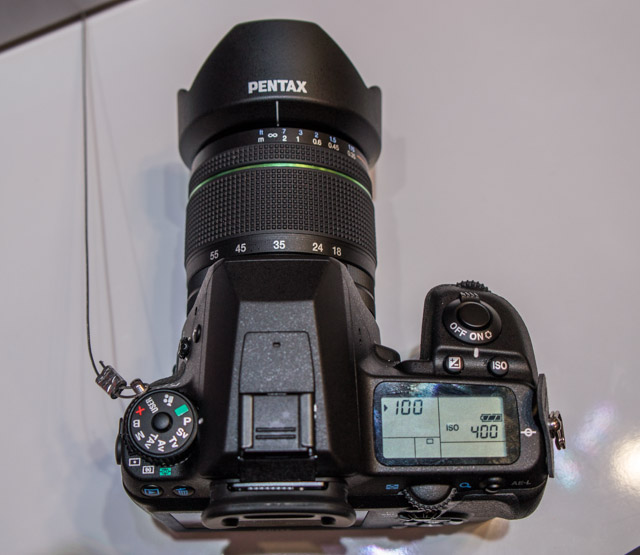
Behind the shutter release on top of the camera, you will find an easily accessible pair of buttons for making ISO and exposure compensation adjustments. Lots of other pro “control” buttons are found around the K-5 II.
As I was checking out the camera (and generally being very impressed), I came across a rather frustrating quirk. As I snapped a few frames in the Pentax booth, I noticed that the camera gave me a delay wheel after every frame, which hinted that it was writing to the card and needed a couple of seconds to make things happen.
I checked the card and it turned out to be a vanilla Kingston Class 4 card (i.e., not a speed demon of a memory card). So, I popped in a SanDisk Extreme Pro card thinking for sure that the lousy memory card was the problem; however, I was met with the same results. It still took the same second or two for the preview image to appear on the back of the screen, which might as well be an eternity in our current high-speed electronics world. Formatting the card in the camera yielded the same results.
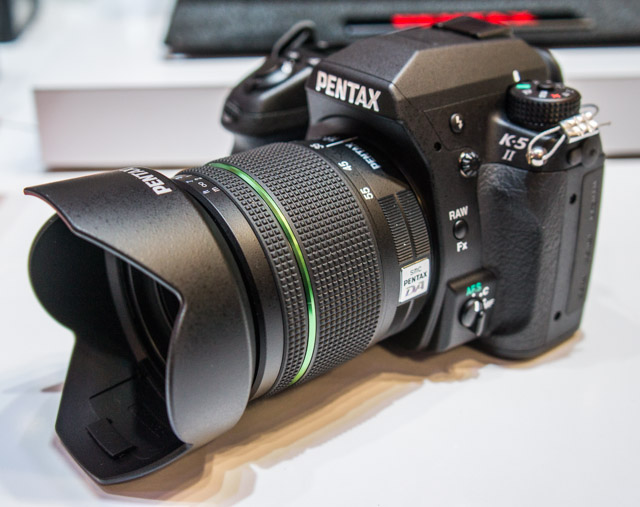
As I dig around on the K-5 II, this quirk seems rather odd because it is generally regarded as a very fast camera. So maybe it’s not the buffer clearing that’s taking the time, but rather the preview image itself. Regardless, it’s a frustrating point of the camera – and really the only negative thing that I have to say about it.
The Pentax K-5 II is available from Photography Bay’s trusted retail partner, B&H Photo, at the following link:
Pentax K-5 II at B&H Photo

With that nostalgia out of the way, I took a closer look at the new Pentax K-5 II and K-5 IIs at the Pentax booth at PhotoPlus 2012. At first blush, I love the way the camera feels in the hand, along with a very intuitive control and menu scheme.

While the K-5 II is not overly large, it still felt like more of a professional tool than some similarly situated cameras from Pentax’s competitors. The rear LCD looks great and provides the relevant info without trying to get too pretty with fancy graphics.

The K-5 II has a very fast AF even with the 18-55mm kit lens, which also has nice zoom and focus rings. The lens zoom and focus rings have a great grip to them with the little raise rubber bumps – and the rotation is smooth and accurate.

Additionally, the K-5 II controls are great for making quick adjustments to AF settings. You can choose between different points and modes quickly with a switch/button that’s accessible via the right thumb – and AF-S, AF-C and M focus modes are accessible via a manual switch on the front left of the camera.

Behind the shutter release on top of the camera, you will find an easily accessible pair of buttons for making ISO and exposure compensation adjustments. Lots of other pro “control” buttons are found around the K-5 II.
As I was checking out the camera (and generally being very impressed), I came across a rather frustrating quirk. As I snapped a few frames in the Pentax booth, I noticed that the camera gave me a delay wheel after every frame, which hinted that it was writing to the card and needed a couple of seconds to make things happen.
I checked the card and it turned out to be a vanilla Kingston Class 4 card (i.e., not a speed demon of a memory card). So, I popped in a SanDisk Extreme Pro card thinking for sure that the lousy memory card was the problem; however, I was met with the same results. It still took the same second or two for the preview image to appear on the back of the screen, which might as well be an eternity in our current high-speed electronics world. Formatting the card in the camera yielded the same results.

As I dig around on the K-5 II, this quirk seems rather odd because it is generally regarded as a very fast camera. So maybe it’s not the buffer clearing that’s taking the time, but rather the preview image itself. Regardless, it’s a frustrating point of the camera – and really the only negative thing that I have to say about it.
The Pentax K-5 II is available from Photography Bay’s trusted retail partner, B&H Photo, at the following link:
Pentax K-5 II at B&H Photo
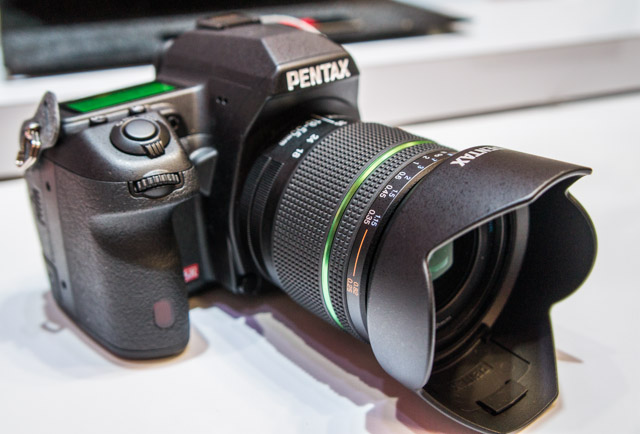
Nessun commento:
Posta un commento